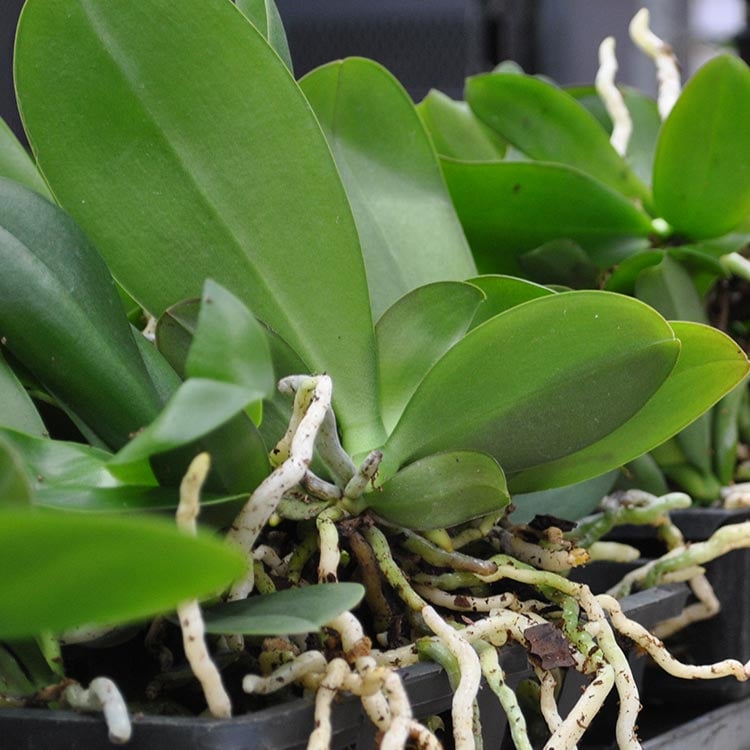
The color of your orchid leaves is one of the best indicators of orchid health. When a healthy Phalaenopsis orchid is in bloom or preparing to bloom, its leaves will be a bright medium green with yellow undertones (the color of healthy grass). But what happens when orchid leaves change colors? Does that mean the plant is unhealthy?
Orchid leaves can become discolored for a number of reasons, but not all leaf coloration is harmful or even bad. For example, the bottom leaf turning yellow is a natural process of the plant discarding a mature leaf to make room for a new leaf. Generally, however, colors belong on orchid blooms, not the leaves.
Notice a foreign shade on your orchid’s leaves? Here’s what it means:
After turning yellow, orchid leaves that are receiving too much light will eventually turn white.
Black leaves can indicate a bacterial or fungal growth or too much fertilizing or mineral deposits from hard water. Leaves may also turn black before falling off if an orchid has received too much light.
Pale, brownish streaks on leaves may mean your orchid has come down with a bacterial or fungal disease.
Leaves that are purple or reddish in color, especially around the edges, can indicate overexposure to sunlight and dehydration.
Green leaves don’t necessarily mean your orchid is in the clear. Dark green leaves indicate your orchid is not getting enough light. Leaves that dull or that have waned in color may mean your orchid is too dry.
Are your orchid leaves indicating your orchid may be sick? Join us for our next blog when we discuss how you can best address leaf discoloration. Subscribe to the blog now so you don’t miss it!

Copyright Just Add Ice® Orchids 2023